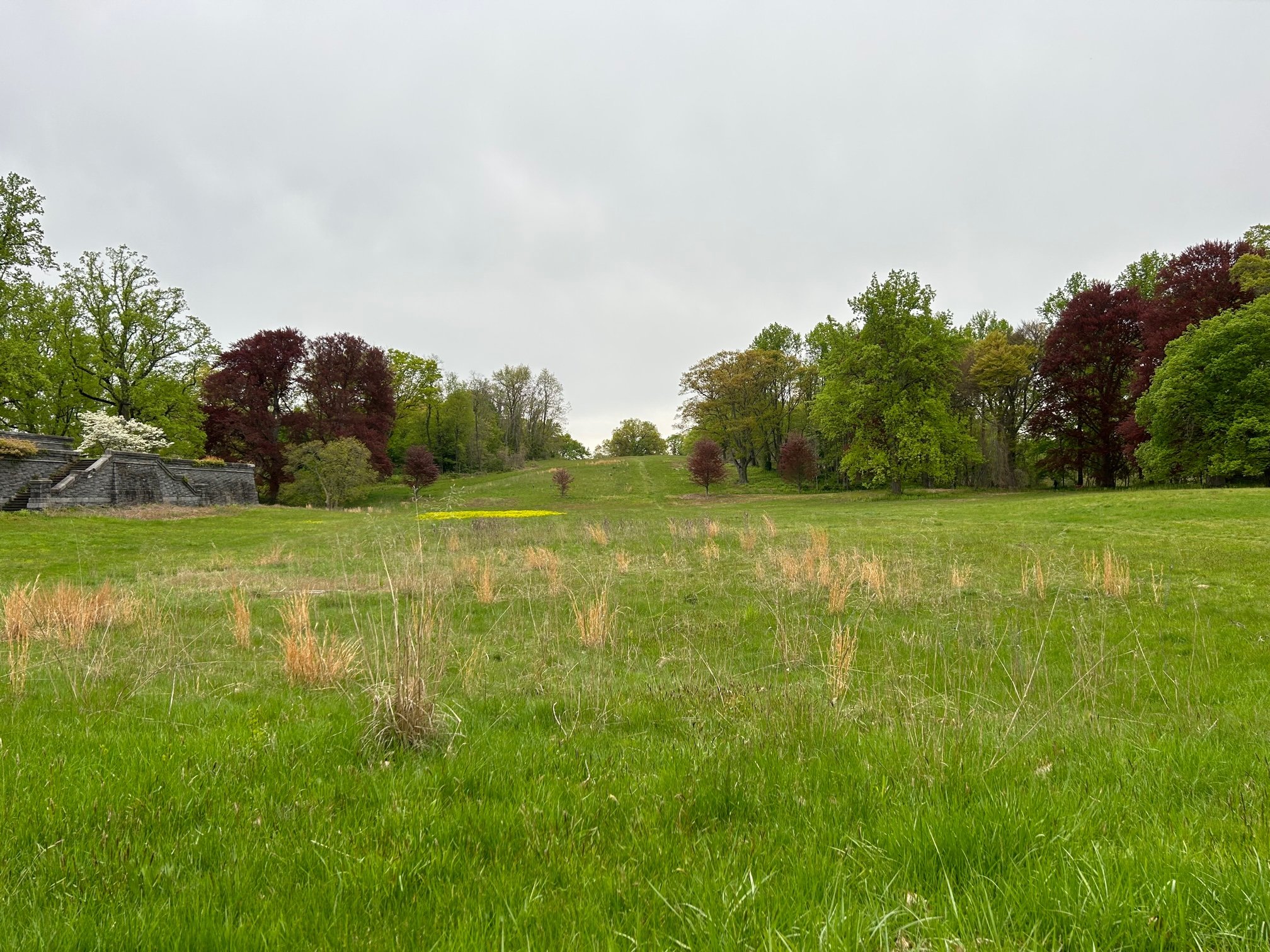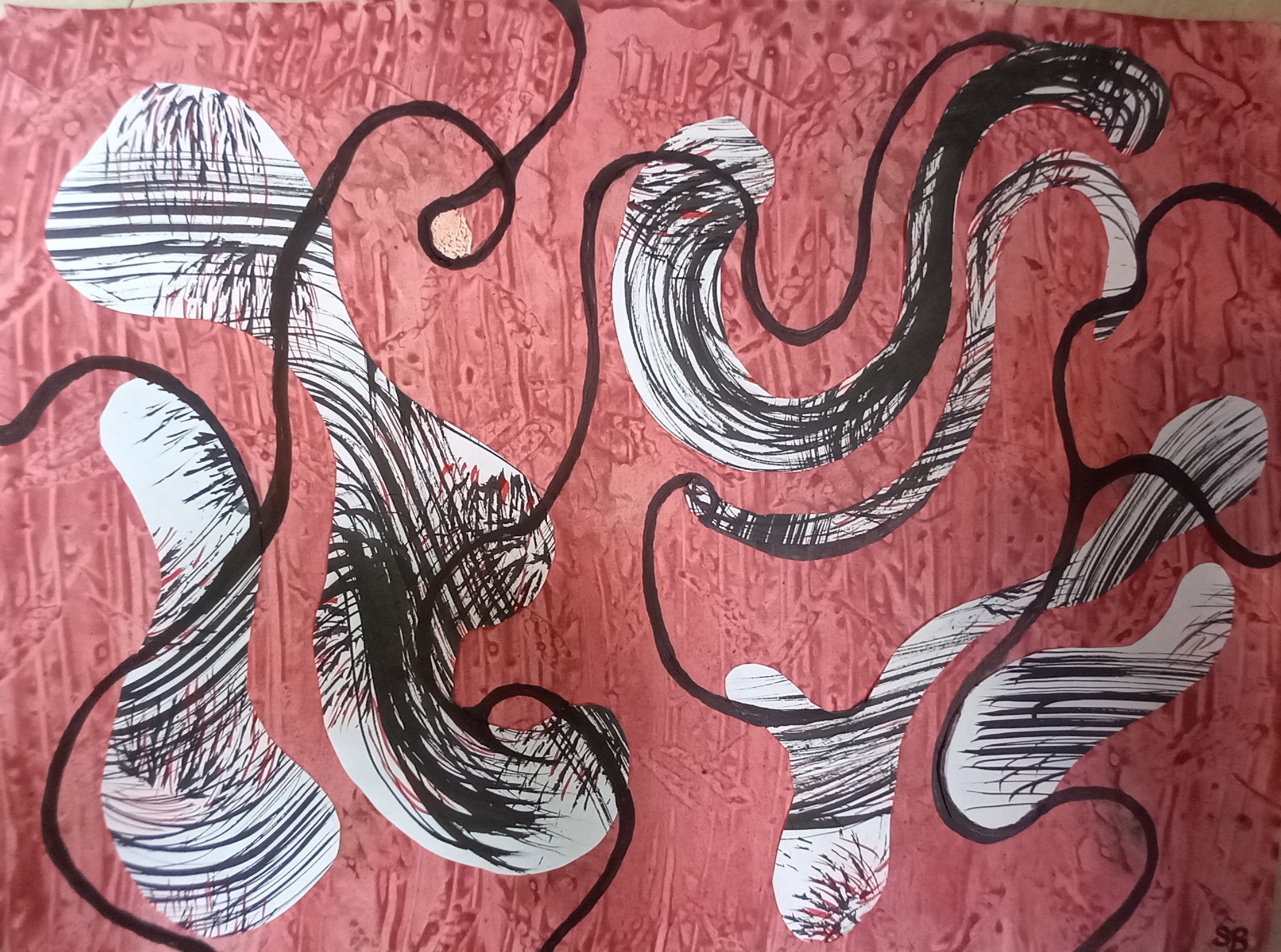Contributed by Barbara Bruno
Contributed by Barbara Bruno





Contributed by Barbara Bruno

Contributed by Barbara Bruno
MAY 8: NATIONAL COCONUT CREAM PIE DAY

National Coconut Cream Pie Day is devoted to the ultimate custard-and-cream concoction. On this day, we contemplate the sheer deliciousness of the coconut cream pie and, of course, help ourselves to a slice. It’s the beginning of warmer weather and longer days filled with languid hours that are perfectly punctuated by a piece of this cool, creamy pie. The basic ingredients for coconut cream pie are a custard made of coconut milk, sugar, egg yolks, cornstarch, and butter, topped with a pile of fluffy whipped cream and toasted coconut shavings. But it always ends up as more than the sum of its parts. Coconut cream pie is well-nigh magical, and that’s why it gets its own day in our calendar.
MAY 9: LOST SOCK MEMORIAL DAY

National Lost Sock Memorial Day honors all the socks that are no longer with us. Where did they go? We are not certain, but what we do know is that losing one sock of a perfectly-matched pair is a wide-spread phenomenon. So much so that we have a day on which to honor those socks we have loved and lost.
With each American having an ever-growing sock drawer, the odds of a paired sock losing its mate increases. In a recent survey of 2,000 people, it was determined the average person loses 1.3 socks each month! That’s a lot of socks every year — over 15 per person, per year. So you can see how this universally hits home and causes us all great distress when a sock goes missing.
MAY 10: NATIONAL SHRIMP DAY

National Shrimp Day recognizes America’s favorite seafood. Americans eat more shrimp than any other seafood, and this is the day to celebrate this delicious seafood. A healthy food, shrimp, is low in calories and high in omega-3, calcium, iodine, and protein levels. Shrimp is also known to be considered good for the circulatory system.
Shrimp fans all across the country can come together to honor their love for the shellfish, commonly called the “fruit of the sea.” Shrimp are interesting characters, and some can even glow in the dark! Elvis Presley even once sang a song about them, crooning, “If I should live to be ninety, I will never forget the little shrimp and the song he sang as he jumped into the net.” In the United States, shrimp is eaten more than any other type of seafood, so of course, it deserves its own day! Grill em, fry em, or eat em cold. Try them on a sandwich, on a salad, or one by one in some delicious cocktail sauce. Whatever you do, take some time to celebrate!
MAY 11: NATIONAL TWILIGHT ZONE DAY

National Twilight Zone Day features mysterious twists and turns highlighted with eerie background music and unexplainable occurrences. The television show The Twilight Zone was created, written, and narrated by Rod Serling. It premiered in fall 1959. The episodes were wildly popular, stretched the imagination, and captivated viewers. The show aired from 1959-1964.
Each episode presented unique stories that led the viewer on a journey into an unknown situation. The characters often revealed their backstories through intense exchanges. Settings ranged from the wild west to penthouse suites. And yet each story took place in the 5th dimension, in The Twilight Zone.
Serling combined his love of pulp fantasy novels with topics not often covered on television at the time: social issues such as war (including nuclear), subject matter McCarthyism and racism. In the opening sequence of each episode, the characters are transported to another dimension — the fifth dimension — known as the "Twilight Zone." There, they deal with many unusual events, and the show often has an unexpected ending with a moral lesson.
MAY 12: LIMERICK DAY

Everybody needs a bit of silliness in their lives from time to time and Limerick Day provides the perfect annual opportunity. The familiar five-line verse is renowned for its humorous, sometimes bawdy themes. Instantly recognizable from the rhythm of the verse they are cleverly constructed to put a smile on the face.
National Limerick Day is set on 12th May to mark the birthday of Edward Lear, the English writer known for his works of nonsensical prose and poetry. It was Edward Lear who was to popularize the Limerick in his A Book of Nonsense, published 1846. His limericks were popular then and this form of nonsense literature has managed to retain its appeal to this day.
Limericks will normally have the first, second and final lines ending with the same rhyme, while the third and fourth shorter lines have their own rhyme as illustrated below:
There was an Old Man with a beard,
Who said, ‘It is just as I feared!
Two Owls and a Hen,
Four Larks and a Wren,
Have all built their nests in my beard!’
This style of verse can act as a great introduction to the idea of poetry for children and Limerick Day helps to maintain awareness of this type of poem.
May 13: FROG JUMPING DAY

The history behind National Frog Jumping Day has turned into a tradition that came to life from the idea of a short story. Mark Twain published his first short story titled “The Celebrated Jumping Frog of Calaveras County” in 1865. This story also goes by “Jim Smiley and His Jumping Frog” and “The Notorious Jumping Frog of Calaveras County.” The premise of the story is about a man named Jim Smiley, a compulsive better. He trains a pet frog he names Dan’l Webster and bets his frog can jump higher than all the other frogs in town. The man who he bets with ends up tricking Smiley and wins the bet.
Inspired by this story, Calaveras County in Northern California started hosting a Calaveras County Fair and Jumping Frog Jubilee during the third week of May. The first event was held in Copperopolis, California in 1893 but has since made its permanent residence in Angels Camp. The fair spans four days and offers classic fair food, award-winning wines, carnival rides, rodeo, and live music, among other things, but their main event is the frog jumping competition. Even though there are other frog jumping competitions throughout different cities in North America, the one at Calaveras is the most popular and well-known because of its relation to Mark Twain’s short story.
MAY 14: NATIONAL CHICKEN DANCE DAY

National Dance Like a Chicken Day on May 14th encourages everyone to dance like a chicken! This day entertains from start to finish with people flapping their arms and strutting chicken-like. Everyone has probably danced the “Chicken Dance” at least once in their lifetime. This silly fun song is popular at wedding dances, Oktoberfest, and other celebrations, too. The song gets people of all ages up and moving on the dance floor.
Written in the 1950s by Werner Thomas, a Swiss accordionist, the Chicken Dance didn’t even make it to the United States until sometime in the 1970s. The Chicken Dance is associated with polkas or oom-pah-pah music. Upon arriving in America in the 1970s, the song acquired choreography with repetitive beak, wing, and tail motions, as well as the new name, The Chicken Dance.
A man was getting a haircut prior to a trip to Rome. He mentioned the trip to the barber, who responded, “Why would anyone want to go there? It’s crowded and dirty and full of Italians. You’re crazy to go to Rome. So, how are you getting there?
“We’re taking United,” was the reply. “We got a great rate!”
“United!” exclaimed the barber. “That’s a terrible airline. Their planes are old, their flight attendants are ugly, and they’re always late. So, where are you staying in Rome?”
“We’ll be at the downtown International Marriott.”
“That dump! That’s the worst hotel in Rome. The rooms are small, the service is surly, and they’re overpriced. So whatcha’ doing when you get there?”
“We’re going to see the Vatican, and we hope to see the Pope.”
“That’s rich,” laughed the barber. “You and a million other people trying to see him. He’ll look the size of an ant. Boy, good luck on this lousy trip of yours. You’re going to need it!
A month later, the man again came for his regular haircut. The barber asked him about his trip to Rome.
“It was wonderful,” explained the man. “Not only were we on time in one of United’s brand new planes, but it was overbooked and they bumped us up to first class. The food and wine were wonderful, and I had a beautiful young stewardess who waited on me hand and foot. And the hotel! Well, it was great! They’d just finished a $25 million remodeling job, and now it’s the finest hotel in the city. They were overbooked, too, so they apologized and gave us the Presidential Suite at no extra charge!”
“Well,” muttered the barber. “I know you didn’t get to see the Pope.”
“Actually, we were quite lucky, for as we toured the Vatican, a Swiss Guard tapped me on the shoulder and explained that the Pope likes to meet some of the visitors, and if I’d be so kind as to step into his private room and wait, the Pope would personally greet me. Sure enough, five minutes later, the Pope walked in. As I knelt down he spoke to me.”
“What did he say?”
“He said, ‘Where’d you get the shitty haircut?’”
Contributed by Cathie Campbell

Utah Canyonlands
Introducing our son
To mountain climbing
He started young
Step by step over rocks
Ascending mountains by the age of four
Happily hiking
Becoming a serious hiker as an adult
Climbing all four thousand footers
In the White Mountains
Drew his full concentration
Preferred the historic mountains of Europe
To the wide open spaces of American mountains
Introducing his children to hiking
Physically nourishes the body
Soothes the mind
Exercise and spectacular views
A special gift
Shared experience
Three generations enriched
Took photographs
Hiking Utah Canyonlands
Fueled my creativity
Inspired my interpretation
In collage
Art, poem, and photos by Sheila Benedis

With the Coronation, the Derby, and the Leave it to Beaver reruns, the Mortmans spent Saturday glued to the TV.

Woodruff hoped that a small zoo on his head and a volunteer from the audience would make his old trapeze act new again.

This time, Selkirk felt certain that he'd pass his road test.

Thanks to Crocker's coaching, the sea horses were favored to win the dog paddle as well as their regular swimming events.

Dolly's dry wit kept the family in stitches.
Art and Photos by Jane Hart

Olmsted’s “Green Pastures,” by Edward Kasinec

Kendal at Twilight, by Marianne Bloomfeld


Photos by Edward Kasinec
A new art show comes to the Rue des Artists in late May. There’s lots to do before that can happen. April 26 was Bring in Your Work day . . .

The Process begins

All different kinds of work come in

Paperwork must be filled out for each piece submitted

Lots of organization is needed

Lots of discussion of tools and techniques

Artists admire each other’s work as it comes in

What did you bring in?

By the end of the day, it’s nice to just sit down
Doll houses on exhibit (until May 7) at Greeley House in Chappaqua. Admire the craftsmanship; remember days gone by . . .


Photos by Marianne Bloomfeld

Contributed by Barbara Bruno
MAY 1: NATIONAL CHOCOLATE PARFAIT DAY

It’s hard to resist a sweet celebration for National Chocolate Parfait Day. The delicious layers of chocolate, cream, and more chocolate sweetly stacked together is enough to make us go straight to dessert. In French, the word “parfait” means “perfect.” French and Americans, however, have differing opinions on what a parfait really is. The traditional French parfait is made by boiling cream, adding egg, sugar, and syrup, then creating a custard-type puree, which is then frozen. Americans, on the other hand, layer ingredients of differing varieties. Both French and Americans use a clear, tall glass when serving a chocolate parfait.
MAY 2: NATIONAL PLAY YOUR UKULELE DAY

National Play Your Ukulele Day is celebrated to interest more and more people in the instrument, while also encouraging those playing it to strum their favorite tunes. The ukulele belongs to the guitar family, though the guitar has 6 strings and the ukulele only 4. When it comes to size, a ukulele is much smaller than a guitar, making it easy to carry around and play. The word ‘ukulele’ has Hawaiian roots meaning “jumping flea,” probably because the musician’s fingers look like fleas jumping on the strings. Even though the instrument’s name has Hawaiian roots, it was brought to the island of Hawaii by Portuguese immigrants. The ukulele, aslo known as the “uke,” was brought to mainstream music in the early 20th century, and quickly became a popular instrument for jazz music. Mike Lynch — “Ukulele Mike” — is behind National Play Your Ukulele Day, first celebrated in 2011. Lynch was a school teacher and an online ukulele instructor.
MAY 3: NATIONAL PUBLIC RADIO DAY

This day celebrates public radio stations and community radio organizations that have come a long way in informing, entertaining, and shaping our local communities. The first non-governmental radio broadcasting started in 1916. These broadcasts were not voices or music but rather Morse code signals. The first World War halted all non-governmental radio broadcasts, and the end of the war heralded the beginning of a new era for radio. Technology had advanced, with the radio’s ability to transmit both voices and music. Radio stations were primarily employed for academic reasons by colleges and universities in the 1920s. By the 1940s, the lowest set of numbers in the FM spectrum had been picked for educational and non-profit reasons, which served as the impetus for creating Public Radio in 1967 when President Johnson signed the Public Broadcasting Act. The Corporation for Public Broadcasting (CPB) was created, leading to the formation of the National Public Radio (NPR). Today it is a prominent media organization that sources and controls informative and educational media content in the US. The origins of National Public Radio Day are unknown, but was first observed in the 1990s — clearly influenced by the UNESCO-recognized World Radio Day in February.
MAY 4: WORLD PASSWORD DAY

Each year, on the first Thursday in May, World Password Day promotes better password habits. Passwords are critical gatekeepers to our digital identities, allowing us to access online shopping, dating, banking, social media, private work, and life communications. In his 2005 book Perfect Passwords, security researcher Mark Burnett first encouraged people to have a “password day” where they update important passwords. Inspired by his idea, Intel Security took the initiative to declare the first Thursday in May World Password Day in 2013. World Password Day is meant to create awareness of the need for good password security.
MAY 5: NATIONAL CARTOONIST DAY

National Cartoonists Day honors all those creative ink-stained artists, past and present, and the fascinating pieces they have created. Throughout the years, their talents bring humor and entertainment into our lives, while provoking thought and debate, too. American comic-strip writer and artist, Richard Outcault, is considered the inventor of the modern comic strip. He created the comic strips The Yellow Kid and Buster Brown.
Cartoon characters can be found in practically all media. They are on television and in newspaper and magazine comic strips (or the “funny papers”). Peanuts, Dennis the Menace, Beetle Bailey, Betty Boop, and so many more cartoon characters got their start in printed media. Comic books abound with cartoon characters. Cartoon characters have been on television since the days of black and white TV. Cartoon characters grace the big screen, too. Disney’s Mickey Mouse first appeared in the movie “Steamboat Willie” in 1928. More recent examples include Shrek, Aladdin, Nemo, and Dora the Explorer. Cartoon characters are used everywhere in advertising, too. Characters like the Trix Bunny and Captain Crunch adorn many cereal boxes. A well-recognized gecko and duck each sell insurance on television.
MAY 6: NATIONAL NURSES DAY

Often the first and last person a patient sees during a hospital visit, nurses are truly the rockstars! At the end of the 19th century, “The Lady with the Lamp” — Florence Nightingale — founded modern nursing. Thanks to her strict use of hand-washing and hygiene practices while caring for wounded soldiers in the Crimean War, Nightingale and her helpers reduced the death rate from 42% to 2% — ushering in nursing as we know it today.
Today, nurses — over 3 million — make up the highest percentage of the US healthcare workforce. They are more likely to sustain a back injury on a shift than construction workers, and walk an average of 5 kilometers per shift. The majority of registered nurses (59%) don’t practice in hospitals but elsewhere, such as nursing home or on home visits. Worldwide, they work across communities to keep people happy and healthy.
MAY 7: WORLD LAUGHTER DAY

Shrill or funny, giggly or bubbly, on this day let out your laughter to your heart’s content. Indeed, spend your life with laughter and joy. Laughter decreases stress. By laughing, the brain releases endorphins which make one feel happy.
The first World Laughter Day gathering took place in Mumbai, India in 1998. Around 12,000 members from the international laughter clubs attended the event — and laughed and laughed. In 2000, a “Happy-demic,” the first world laughter day outside India, was held Copenhagen, Denmark. Around 10,000 people attended, putting it in the “Guinness Book of World Records.”
Origins of laughter can be traced back 10 million years. Laughter is linked to high pain tolerance and even social status, but the primary function appears to be to create profound social bonds. As our ancestors started to live life in complex social structures, the quality of relationships became crucial for survival. There is supposedly a book in which King Philip of Macedonia, the father of Alexander the Great, requested an Athenian social club to write down its member’s funniest jokes. Athenaios of Naukratis, a 2 AD Greek writer, mentions the book’s existence. But it did not survive to the present day.
A book of all our funniest jokes. Now that’s fuel for a great Kendal committee!







Contributed by Barbara Bruno

This was a photo shoot. Thanks to the modern miracle of artificial food coloring, no squid were harmed in the making of Joey's famous squid ink pasta.

Arline worried a lot about her mini horse.

Despite eager assurances, few members of Margo's hockey team actually showed up for class reunion.

Woofy and Royalton were not everybody's cup of tea.

Fluff had her spicy cat food dream again.
Art and Photos by Jane Hart

Art and Photo by Sheila Benedis

Daffodils at Kendal’s entrance

Layers of clouds over the Hudson

Two does at Rockwood Hall
Photos by Harry Bloomfeld

Photo by Joe Bruno

This puzzle is so famous that a framed print hangs on a Kendal wall. Do you know where?
Photo by Ursula Hahn

Philipse Manor Hall State Historic Site

South view of Manor

For historic context, Yonkers in 17th Century (the Manor house is #1)


Civil War Memorial
Photos by Art Brady
A Portrait of Autism: Artists and Their Works, With Sheila Benedis
On April 14, The National Institute of Mental Health (NIMH) and the Office of Autism Research Coordination (OARC) hosted their 10th Annual Autism Awareness Month Special Event, A Portrait of Autism: Artists and Their Works. The virtual event featured four artists who talked about how their experiences as autistic individuals have shaped their artistic expression. Key among them wasour very own Sheila Benedis. The event included a sampling of their artwork and a Q&A with the artists.
If you missed it, you can find a video recording by clicking the button below.
And you can see Sheila’s most recent work here.
April 24: National Pigs in a Blanket Day

National Pig-in-a-Blanket Day is celebrated across the world. Pigs-in-a-blanket, a dish made by wrapping pork sausage in bacon, is most common during Christmas. This dish is made with different variations in different parts of the world. In the United States, pigs-in-blankets are often baked by wrapping hot dogs or sausages in biscuit dough, croissant dough, or a pancake. These are usually made small and are served as an appetizer, though they can be served at any three mealtimes. These are also found with little differences in the United Kingdom, Denmark, Ireland, Germany, Belgium, Russia, Canada, and Japan. Children of America enjoy this dish for generations.
April 25: World Penguin Day

World Penguin Day aims to raise awareness about these flightless birds to preserve their species so future generations get to see these elegant and remarkable creatures. This day coincides with the annual northern migration of Adélie penguins, a pattern inherent and conserved across generations. Eight species are native to Antarctica. Most penguins are monogamous and have unique calls to assist them in finding their mates in large groups. Most species lay up to two eggs in a season. The King and Emperor penguins lay only one. Alarmingly though, of the 18 known living species, 10 have been listed as endangered.
April 26: Hug a Friend Day

Hug a Friend Day is the time to celebrate your favorite people on earth. Friendship has a huge impact on mental health and happiness, relieves stress, brings comfort and joy, prevents loneliness and isolation. Hugs may release a hormone called oxytocin into the bloodstream, which helps lower blood pressure, heart rate, and the stress hormone cortisol.
April 27: National Tell a Story Day

Stories have the undeniable quality of transporting us to another time and place as we sit snug in our seats. Stories are also great bonding material since people create memories as they immerse themselves in the storytelling activity. Whether they happened in real life or are a product of our imagination, stories form an interesting part of human society. In the old days, they were used as history recording tools as well as entertainment. From “Aesop’s Fables” and ancient Egypt’s hieroglyphics to modern-day Harry Potter, storytelling is no different today with the advent of shows, books, poetry, etc.
April 28: National Blueberry Pie Day

National Blueberry Pie Day on April 28th each year ushers in blueberry pie-making season. Blueberry harvest begins in April and lasts until September giving us a long season full of blueberry enjoyment. We’ve been enjoying blueberries in pies since early American settlers arrived. In 1872, the first documented recipe for blueberry pie appeared in the Appledore Cook Book. Blueberries are abundant in Maine, so it’s no surprise that blueberry pie is the state’s official dessert! (And just FYI: New York’s state dessert is cheesecake! Which you can top with blueberries, of course.)
April 28: National Peace Rose Day

National Peace Rose Day honors a well-known and fruitful garden rose. The light yellow to large cream-colored flowers of the Peace rose have slightly flushed crimson pink petal edges. It is a hybrid tea rose that is hardy, vigorous, and highly resistant to disease. French horticulturist Francis Meilland developed the Peace rose between 1935 and 1939. When Meilland foresaw the German invasion of France, to protect the new rose, he sent cutting to his friends in Italy, Turkey, Germany, and the United States. It is believed these cuttings were sent to the United States on the last plane available before the German invasion. Each country that received a cutting gave the rose a different name. The United States named the rose “Peace.” The national flower of the United States is the rose. Later in 1945, Peace roses were given to each delegate at the inaugural meeting of the United Nations, in San Francisco, with a note that read: “We hope the Peace rose will influence men’s thoughts for everlasting world peace.”
April 30: Bugs Bunny Day

National Bugs Bunny Day commemorates the date the famous bunny first appeared in a short film in 1938. Known for his comical antics, Bugs Bunny created memorable roles in Looney Tunes and Merrie Melodies cartoons produced by Warner Bros. The wascally wabbit caused many a raucous scene for his castmates Daffy Duck, Yosemite Sam, Porky Pig, Pepe Le Pew, and Marvin the Martian. However, his eminent counterpart was forever the estimable hunter, Elmer Fudd. He first appeared in 1938 in Porky’s Hare Hunt as a Happy Rabbit but later solidified his character as Bugs Bunny in the 1940 A Wild Hare. Over the years, various actors have voiced the animated bunny. However, Mel Blanc originally voiced the iconic “Eh, what’s up, doc?” voice and he did so for almost 50 years.
© Kendal on Hudson Residents Association 2015, 2016, 2017, 2018, 2019, 2020, 2021, 2022 all rights reserved. Please do not reproduce without permission.
Photographs of life at Kendal on Hudson are by residents.